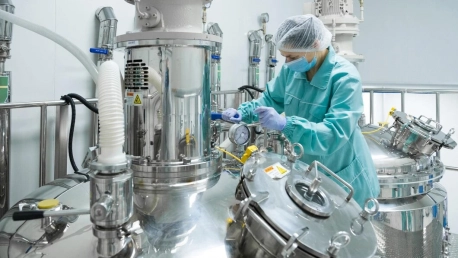Managing conditions in a bioreactor is critical for successful bioprocessing. This is especially so when dealing with fragile cultures such as CHO cells, where pH levels are crucial for encouraging growth and production. Traditional electrochemical probes have been favored for monitoring pH due to their reliability. But now, optical sensors have come to the fore, utilizing fluorescent dyes to gauge pH. These sensors are promising additions to bioreactor technology, as their compatibility with modern single-use systems makes them versatile tools in the industry. Their potential in enhancing measurement efficiency while offering new opportunities for integration in bioreactor designs cannot be underestimated. With continuous advancements, optical sensors may redefine standard practices in bioprocessing, targeting precision and ease of use in pH monitoring.
The Shift to Optical Sensors
Benefits and Limitations of Optical pH Sensors
Optical pH sensors offer a modern way to observe pH levels in bioreactors without the drawbacks of traditional electrodes, which are prone to corrosion and damage during sterilization. Their flexibility makes them well-suited for use in various bioreactor systems, including small microbioreactors and disposable bags. Despite their potential, research led by Fratz-Berilla et al. uncovered that these sensors are not as precise as their electrochemical counterparts. The findings revealed a notable inconsistency in optical sensor readings, which, though perhaps tolerable for certain applications, could pose difficulties for processes that demand highly accurate pH measurement and strict control. This disparity in measurement precision should be considered when opting for optical pH sensors in applications where pH control is of utmost importance.
Performance Over Time
When it comes to long-term cell culture processes, the sensor choice between optical and electrochemical is crucial. Initially, electrochemical sensors might offer accurate results, but over time they tend to experience a decrease in precision. This gradual drift in accuracy can be a major issue for bioprocessing applications that require sustaining cultures over extended periods. Conversely, optical sensors, though perhaps less precise at the outset, exhibit a more stable performance level over similar durations. Consequently, for effective decision-making in sensor selection, it is imperative to consider not just the initial sensor accuracy but also how consistently the sensors maintain their accuracy throughout the culture’s lifespan. The longevity and reliability of sensor performance are essential factors to weigh alongside initial accuracy when deciding on the appropriate technology for enduring bioprocessing tasks.
Ensuring Bioprocessing Consistency
Single-use Sensor Advantages
Single-use sensors in bioprocessing, whether they are based on electrochemical or optical principles, have become highly popular for their ease of use and reduced contamination risks. The convenience they offer significantly streamlines workflow, with shorter preparation times being a key advantage. However, caution is advised, as noted in Fratz-Berilla’s research. While such sensors are operationally beneficial, it’s essential to weigh these advantages against potential compromises in measurement accuracy and process control. Ensuring these sensors meet the required performance standards is vital for maintaining the integrity and reliability of bioprocessing. Ultimately, the goal is to integrate single-use sensors without undermining the quality of data or the outcomes of the processes they’re designed to monitor.
Impact on Product Quality
Precise pH control is crucial in bioprocessing, as slight shifts can affect the product, causing issues like protein distortion, varied cell activity, and reduced cell growth. The calibration and stability of pH sensors are key to maintaining product integrity, indicating the need for regular scrutiny of sensor accuracy. FDA research highlights the importance of employing advanced sensor technology while being mindful of their potential pitfalls. This balance is vital in the high-stakes realm of bioprocessing, where product consistency is paramount and regulatory compliance is mandatory. Understanding sensor dynamics helps process engineers secure a consistent quality, crucial for meeting industry standards and ensuring the reliability of bioprocessed products.









